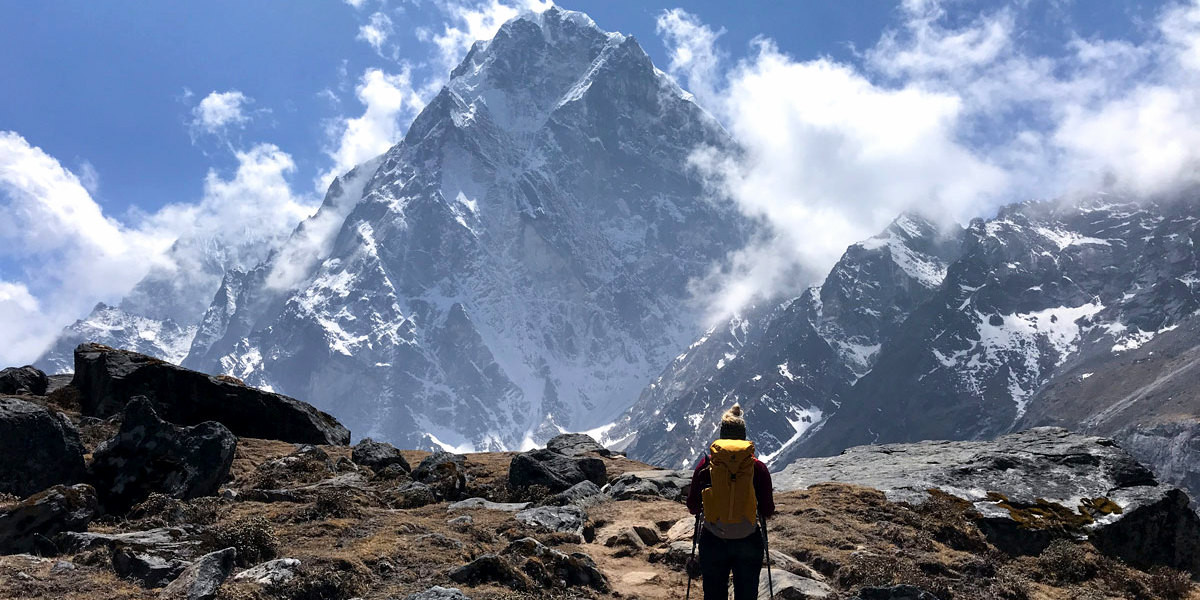Everest Base Camp Trek
The Everest Base Camp Trek is one of the most iconic and exhilarating hiking adventures in the world, attracting trekkers from all corners of the globe. Located in the heart of the Nepalese Himalayas, this trek not only offers the opportunity to immerse oneself in stunning natural landscapes but also to experience the rich culture of the Sherpa people, the famous mountain dwellers of Nepal.
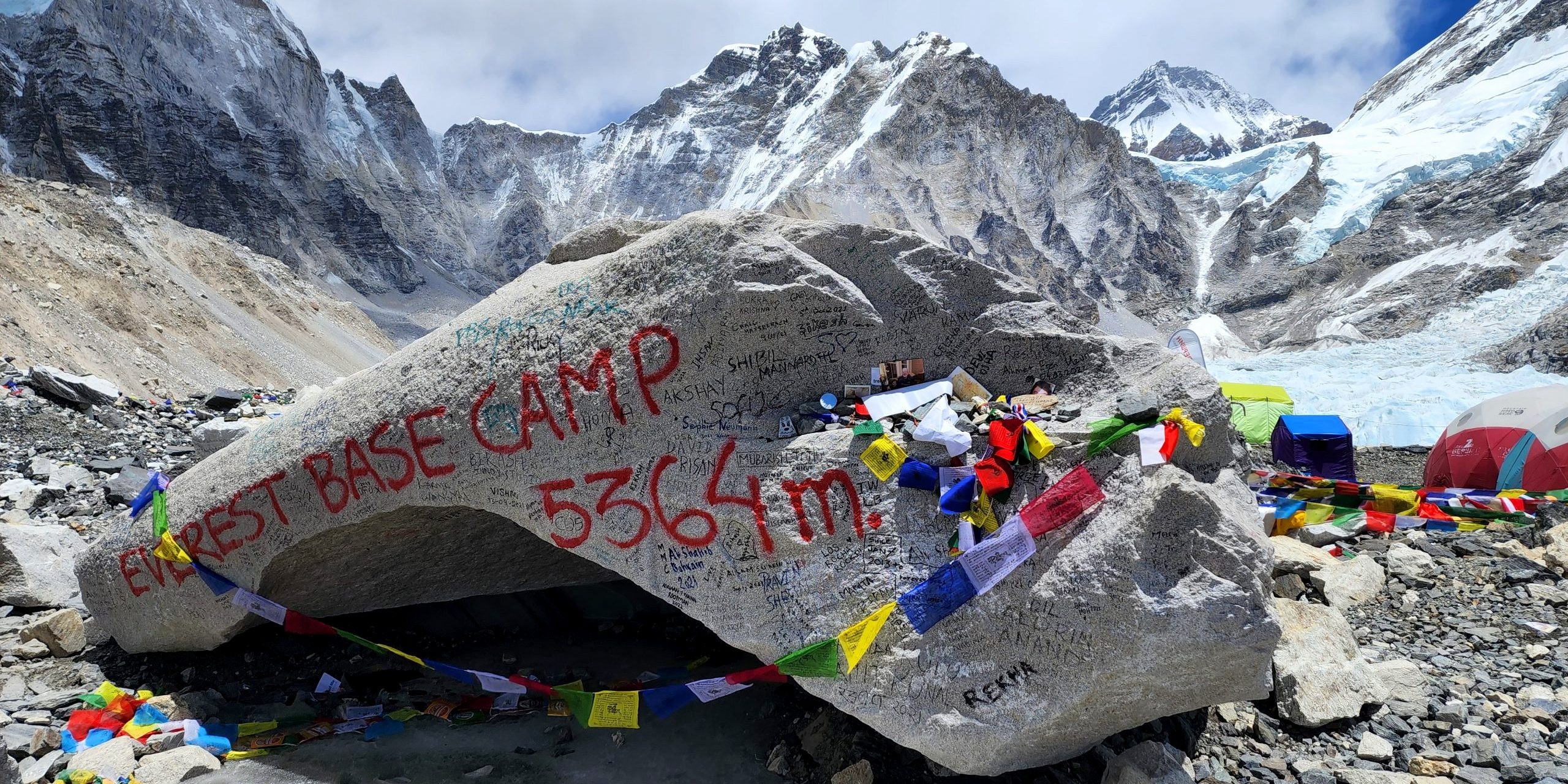
Key Highlights
-
Scenic Flight to Lukla: The trek typically begins with a short but thrilling flight to Lukla from Kathmandu, offering aerial views of the Himalayas.
-
Sherpa Culture and Villages: As you trek through the Khumbu region, you'll visit traditional Sherpa villages like Namche Bazaar, the unofficial capital of the Khumbu region, and Tengboche, known for its monastery, the largest in the Khumbu region.
-
Stunning Views of the Himalayas: The trek offers unparalleled vistas of some of the world's highest peaks including Mount Everest, Lhotse, Nuptse, and Ama Dablam among others.
-
Sagarmatha National Park: This UNESCO World Heritage Site is rich in flora and fauna, offering trekkers the chance to experience the unique biodiversity of the Himalayan region.
-
Everest Base Camp and Kala Patthar: Reaching the Base Camp itself is an incredible achievement, but the ascent to Kala Patthar provides the best view of Mount Everest's south face.
Physical and Logistical Considerations
-
Duration and Distance: The trek typically takes about 12 to 14 days, covering a round trip distance of approximately 130 kilometers from Lukla.
-
Difficulty Level: It is considered a moderately difficult trek due to its high altitudes, cold temperatures, and the physical demands of walking long distances. Acclimatization days are included in the itinerary to help trekkers adjust to high altitudes.
-
Permits Required: Trekkers need to obtain a TIMS (Trekker's Information Management System) card and a Sagarmatha National Park permit.
The Everest Base Camp Trek is not just about reaching the base of the tallest mountain in the world; it's about embracing the challenge, enjoying the journey, and making memories that last a lifetime. With careful preparation and a spirit of adventure, this trek can be a profoundly rewarding experience.
Annapurna Circuit Trek
The Annapurna Circuit Trek is a renowned trek in Nepal, celebrated for its stunning diversity in landscapes and rich cultural experiences. This trek circles the Annapurna massif, providing trekkers with an incredible variety of scenery ranging from subtropical forests and paddy fields to high-altitude plateaus and offers a deep dive into the cultures of various ethnic groups living in the Annapurna region.
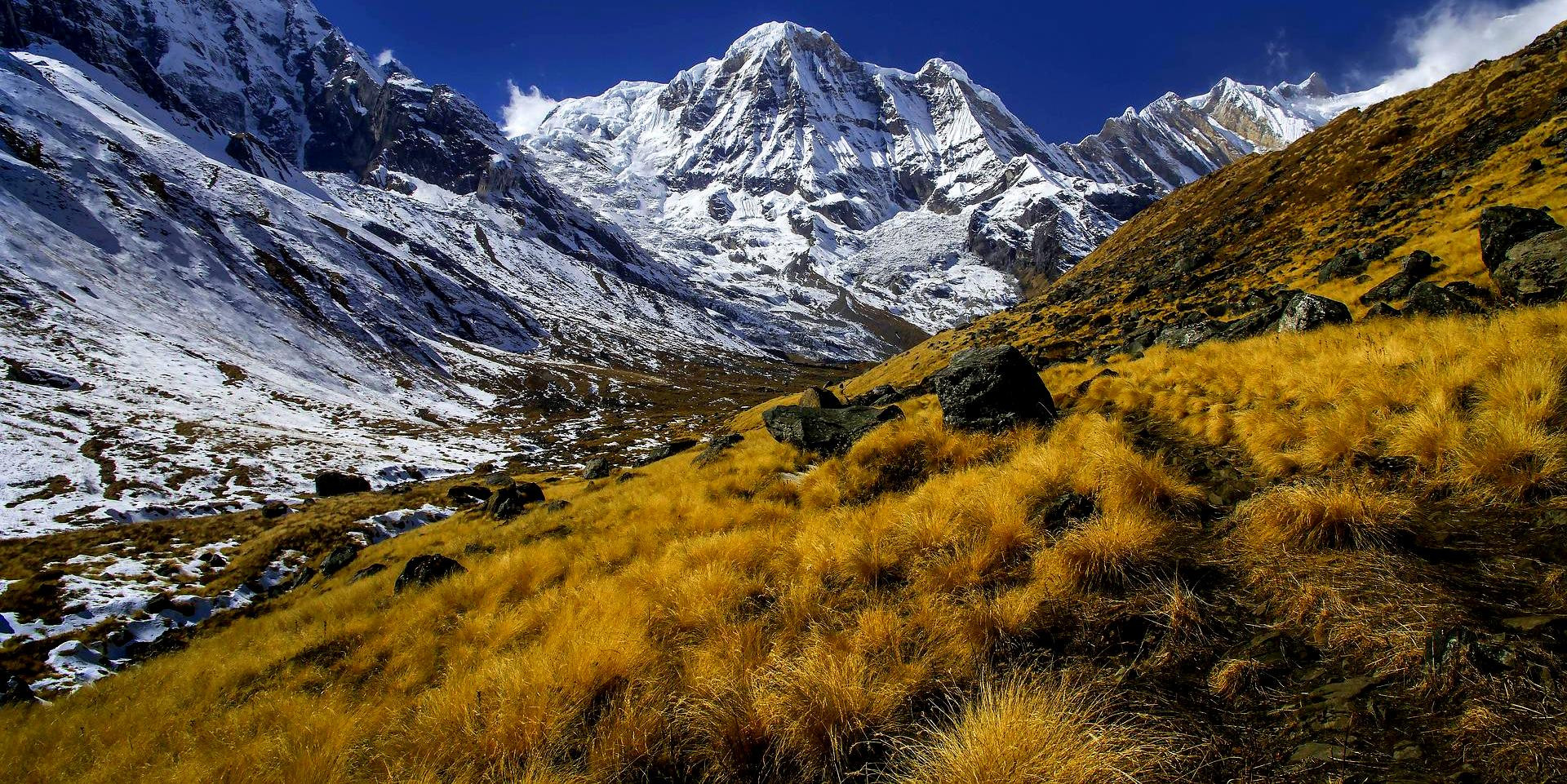
Key Highlights
-
Diverse Landscapes: The trek transitions through multiple climate zones, from lush subtropical forests in the lower reaches to arid, almost lunar landscapes in the Mustang region.
-
Thorong La Pass: Crossing the Thorong La Pass at 5,416 meters (17,769 feet) is one of the most challenging and rewarding parts of the trek. It's the highest point of the trek and offers dramatic views.
-
Cultural Richness: Trekkers pass through villages inhabited by Gurungs, Manangis, and Thakalis, providing insights into the lifestyle and traditions of Nepal’s mountain communities.
-
Manang and Muktinath: These are two of the key stops along the route. Manang is known for its stunning views and unique culture, while Muktinath is an important pilgrimage site for both Hindus and Buddhists.
Physical and Logistical Considerations
-
Duration and Distance: The trek typically takes about 12 to 21 days, depending on the chosen route and side trips. The classic route covers around 160 to 230 kilometers.
-
Difficulty Level: It is considered moderate to challenging, especially the ascent to Thorong La Pass. Adequate physical preparation and acclimatization days are crucial for a successful trek.
-
Permits Required: A TIMS card and an Annapurna Conservation Area Permit (ACAP) are required to undertake this trek.
The Annapurna Circuit Trek offers a deeply enriching and varied trekking experience, making it one of the most popular choices for those looking to explore the Himalayas comprehensively. Its combination of natural beauty and cultural immersion makes it a compelling choice for many adventurers around the world.
Langtang Valley Trek
The Langtang Valley Trek is a serene and picturesque journey in one of the most accessible trekking regions near Kathmandu, Nepal. This trek offers an excellent mix of natural beauty and cultural experiences, taking you through lush forests, rugged landscapes, and traditional ethnic villages. It's often considered a hidden gem compared to the more trafficked routes of Everest and Annapurna.
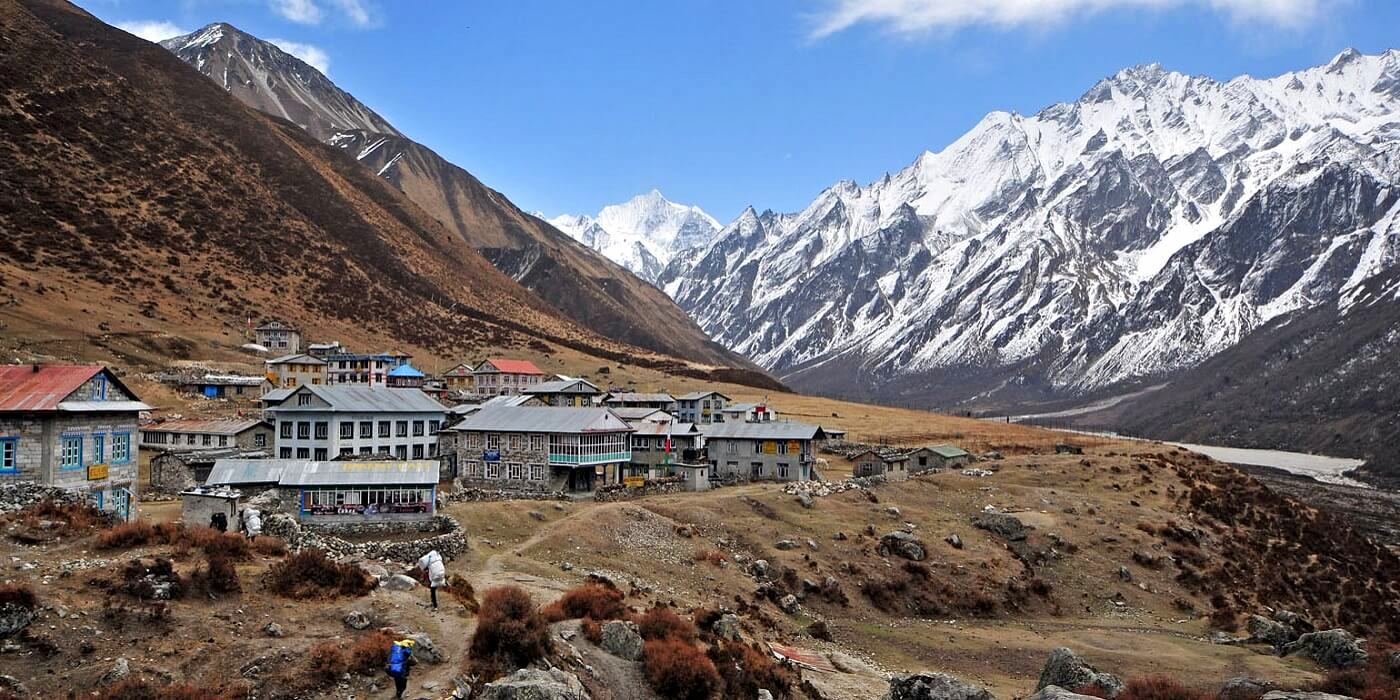
Key Highlights
-
Scenic Landscapes: The trek traverses dense forests, high alpine meadows, and yak pastures, alongside impressive views of Langtang Lirung, Langtang II, and other Himalayan peaks.
-
Cultural Exposure: The region is predominantly inhabited by the Tamang people, whose culture and traditions are similar to those of Tibetan communities. The trek provides insight into their lifestyle, especially in the village of Langtang itself, which has been rebuilt after being devastated by the 2015 earthquake.
-
Kyanjin Gompa: This small Tibetan Buddhist monastery is a significant highlight of the trek, situated at an altitude of about 3,800 meters. Trekkers often use the village as a base for acclimatization and further exploration, including climbs to nearby peaks such as Tserko Ri.
-
Rich Biodiversity: The trek lies within the Langtang National Park, offering opportunities to see diverse flora and possibly fauna like red pandas, Himalayan black bears, and different species of birds.
Physical and Logistical Considerations
-
Duration and Distance: Typically, the trek lasts between 7 to 10 days, covering approximately 65 kilometers on a round trip from Syabrubesi, the usual starting point after a drive from Kathmandu.
-
Difficulty Level: The trek is considered moderate in difficulty. It doesn't reach the extreme altitudes of some other Nepali treks, but it involves steady climbing and can be strenuous at times.
-
Permits Required: A TIMS card and a Langtang National Park permit are necessary for this trek, both of which can be arranged in Kathmandu or at entry points.
The Langtang Valley Trek is ideal for those looking for a shorter trek in Nepal that still offers significant altitude gains and splendid Himalayan scenery without the crowds found on more popular trails. It's an excellent choice for experiencing the heart of Nepal’s natural beauty and cultural richness within a relatively condensed timeframe.
Manaslu Circuit Trek
The Manaslu Circuit Trek is a remarkable journey around the world’s eighth highest mountain, Mount Manaslu, offering a more secluded alternative to the busier trails of Nepal. This trek is renowned for its raw beauty and the authentic experience it provides, as it takes trekkers through some of the most untouched and ancient landscapes in the Himalayan range.
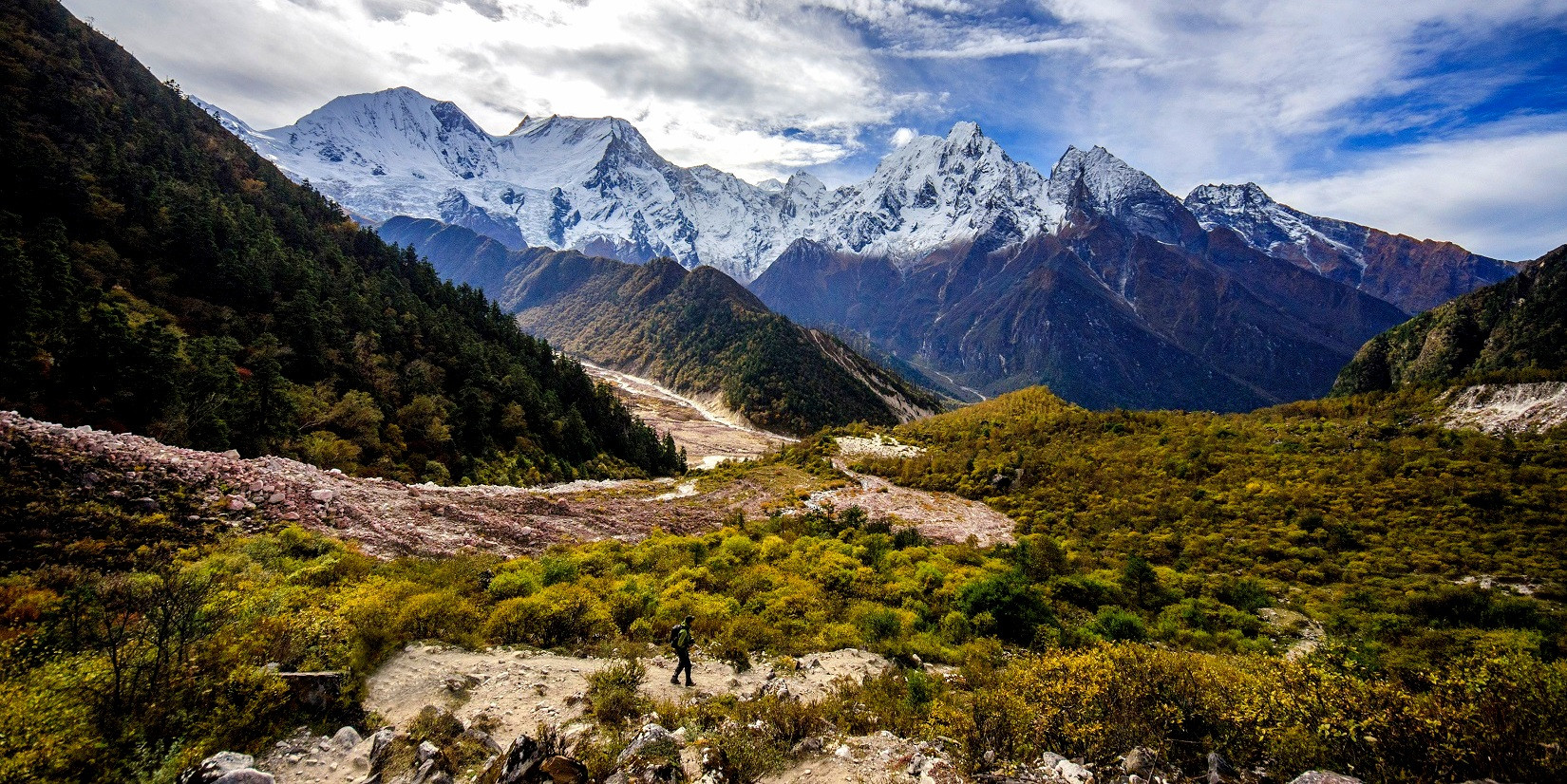
Key Highlights
-
Remote and Untouched Landscapes: The trek circles the majestic Manaslu mountain, traversing through remote Himalayan villages and untouched natural beauty. The trail offers spectacular views of Manaslu and neighboring peaks above 8,000 meters, including Himalchuli, Ngadi Chuli, and Ganesh Himal.
-
Rich Cultural Experience: The region is predominantly inhabited by ethnic Tibetan and Gurung people, offering trekkers a glimpse into traditional lifestyles that have remained largely unchanged over centuries.
-
Larkya La Pass: One of the trek's most challenging and exhilarating features is crossing the Larkya La Pass, which is one of the highest and most picturesque passes in the Himalayas, standing at 5,106 meters.
-
Biodiversity: The trek passes through the Manaslu Conservation Area, which is home to diverse flora and fauna, including endangered species such as the snow leopard and the red panda.
Physical and Logistical Considerations
-
Duration and Distance: The trek usually takes about 14 to 16 days to complete, covering a distance of approximately 177 kilometers (110 miles). The journey starts at Soti Khola and concludes at Besisahar, which is also the starting point for the Annapurna Circuit.
-
Difficulty Level: The trek is considered challenging due to its length, the remote nature of the trail, and the high altitude, particularly when crossing the Larkya La Pass. Proper acclimatization days are incorporated into the itinerary to help manage the risk of altitude sickness.
-
Permits Required: As the trek goes through a restricted area, trekkers need a special Manaslu Circuit permit, a Manaslu Conservation Area Permit (MCAP), and an Annapurna Conservation Area Permit (ACAP) if continuing onto the Annapurna Circuit. These are arranged through registered trekking agencies to ensure adherence to local regulations.
The Manaslu Circuit Trek is perfect for those seeking a challenging trek that offers both solitude and a deep cultural experience, away from the more commercialized trails. This trek not only challenges your physical limits but also immerses you in the rich cultural tapestry of the Nepalese mountain communities.
Upper Mustang Trek
The Upper Mustang Trek offers a fascinating journey into the remote and ancient kingdom of Mustang, which was only opened to trekkers in the early 1990s. Known as the "Last Forbidden Kingdom," it remains one of the few places in the Himalayas where Tibetan culture remains almost untouched by modernization. This trek not only showcases dramatic desert landscapes and ancient monasteries but also allows trekkers to experience a way of life that has remained unchanged for centuries.
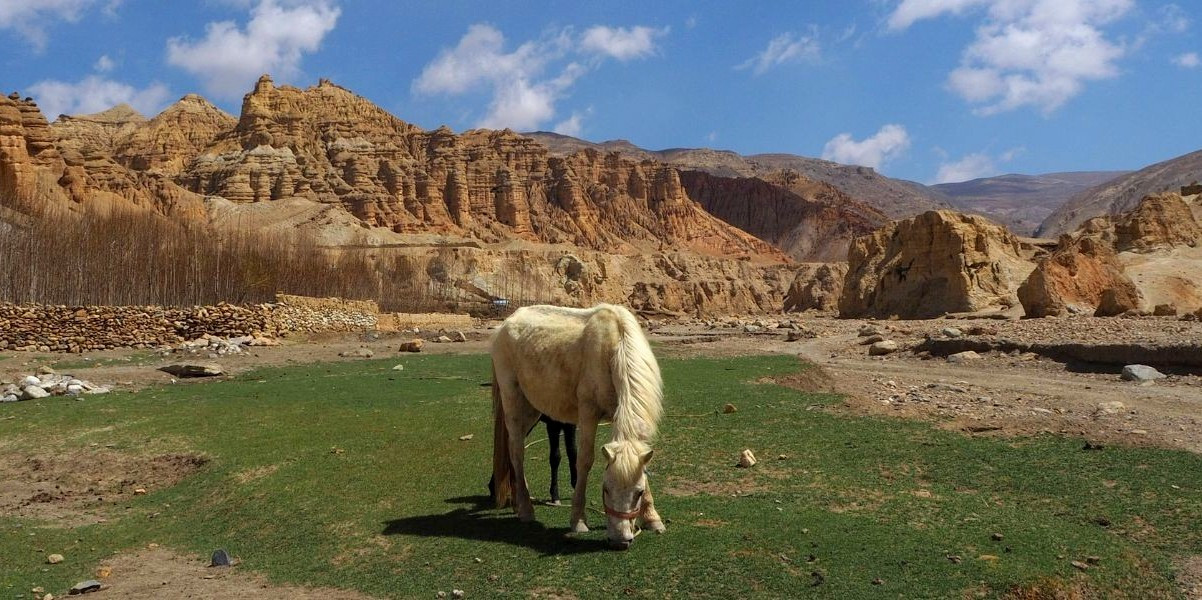
Key Highlights
-
Unique Landscape: Unlike the lush green landscapes typical of other parts of Nepal, Upper Mustang features a stark, arid desert terrain with deep ravines and rock shelves, flanked by snowy peaks.
-
Rich History and Culture: The region is dotted with ancient Buddhist monasteries, traditional villages, and mysterious caves, offering insights into the deeply spiritual and historical significance of Mustang. The walled city of Lo Manthang, the capital of the ancient Kingdom of Mustang, is a highlight, with its alleyways, monasteries, and royal palace.
-
Tiji Festival: If timed right, trekkers can witness the Tiji Festival in Lo Manthang, a three-day ritual known for its colorful dances and costumes, which celebrates the myth of a son who had to save the Mustang kingdom from destruction.
Physical and Logistical Considerations
-
Duration and Distance: The trek typically takes about 10 to 14 days, starting from Jomsom, accessible by flight from Pokhara, and heads towards Lo Manthang before returning.
-
Difficulty Level: The trek is considered moderate in difficulty. It doesn't involve very high altitudes compared to other Himalayan treks, peaking at about 3,800 meters, but the arid conditions and strong winds can be challenging.
-
Permits Required: Due to its status as a restricted area, trekkers need a special permit to enter Upper Mustang. The Upper Mustang restrictions require that trekkers obtain a restricted area permit, which can be quite costly but is essential for preserving the region's unique heritage.
The Upper Mustang Trek is an exceptional choice for those looking to explore a less trafficked area of Nepal while experiencing a culture that has retained much of its traditional Tibetan roots. It offers a starkly beautiful landscape and a peek into a way of life that has remained isolated from the rest of the world for centuries, making it a truly unique and unforgettable adventure.
Gokyo Lakes Trek
The Gokyo Lakes Trek is a magnificent alternative to the traditional Everest Base Camp route, offering trekkers a less crowded yet equally spectacular experience in the Everest region. This trek is celebrated for its breathtaking views of turquoise lakes, the largest glacier in Nepal, and some of the highest peaks in the world, including Everest itself.
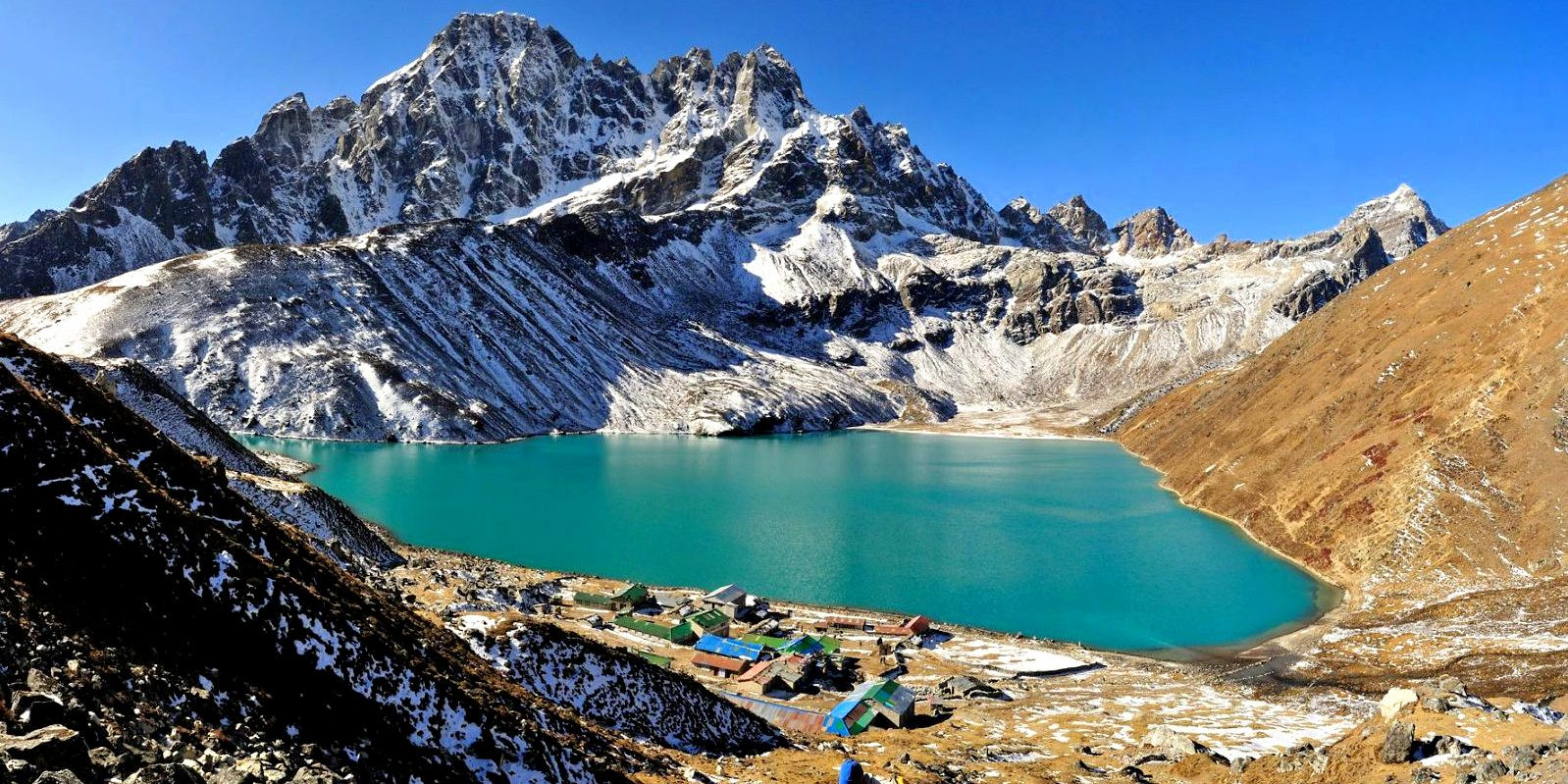
Key Highlights
-
Scenic Lakes: The trek features the stunning Gokyo Lakes, a series of six oligotrophic lakes. They are the world’s highest freshwater lake system, located at an altitude of about 4,700 to 5,000 meters, making them a significant highlight of the trek.
-
Gokyo Ri: Climbing Gokyo Ri (5,357 meters) offers trekkers panoramic views of Everest, Lhotse, Makalu, and Cho Oyu—four of the highest peaks in the world. This ascent is often considered one of the best vantage points in the Khumbu region.
-
Ngozumpa Glacier: Trekkers will have the opportunity to observe the Ngozumpa Glacier, the largest glacier in the Himalayas, adding a dramatic element to the already stunning scenery.
-
Renjo La Pass: For those extending their trek, crossing the Renjo La Pass offers breathtaking views and connects the Gokyo Valley with the remote Bhote Koshi region.
Physical and Logistical Considerations
-
Duration and Distance: The trek typically lasts between 12 to 15 days, covering a moderate distance that is manageable for people with general fitness levels but challenging enough for more seasoned trekkers.
-
Difficulty Level: The trek is considered moderate to challenging, mainly due to the Gokyo Lakes altitude and potential for altitude sickness. Proper acclimatization days are essential to adapt to the high elevation.
-
Permits Required: A TIMS (Trekker's Information Management System) card and Sagarmatha National Park permit are necessary for this trek.
The Gokyo Lakes Trek offers a compelling journey through the Khumbu region with fewer trekkers and untouched natural beauty, making it ideal for those seeking tranquility alongside dramatic mountain scenery. The trek not only challenges adventurers with its high altitudes and rigorous climbs but also rewards them with some of the most spectacular views in Nepal.
Kanchenjunga Base Camp Trek
The Kanchenjunga Base Camp Trek is an exceptional journey to the eastern part of Nepal, where the third highest mountain in the world, Mount Kanchenjunga, towers at 8,586 meters. This trek is less frequented by tourists compared to other Himalayan treks, offering a much more solitary and raw experience amidst some of the most stunning landscapes in the region.
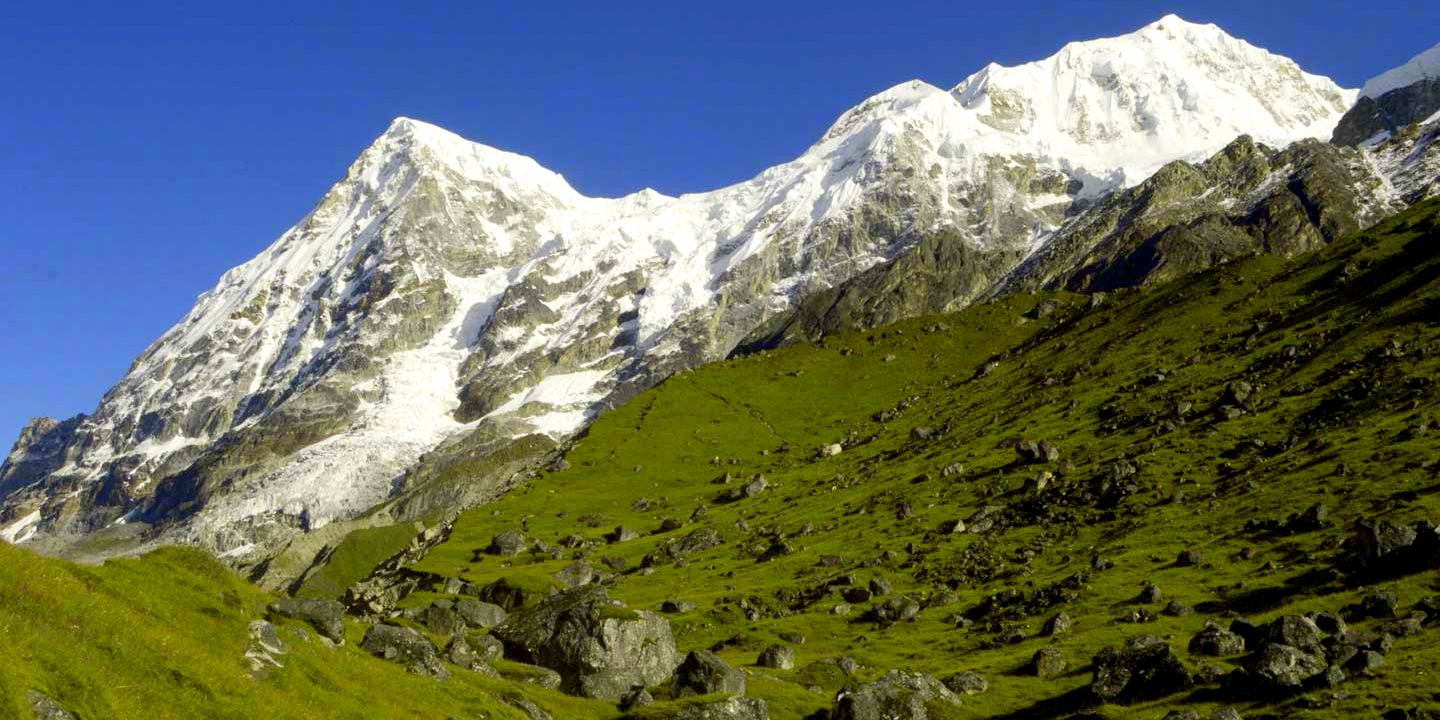
Key Highlights
-
Spectacular Mountain Views: The trek provides close-up views of Mount Kanchenjunga, along with a panorama of towering peaks that border Nepal and Sikkim. Trekkers can experience the grandeur of mountains like Jannu, Makalu, and Lhotse.
-
Diverse Ecosystems: The route passes through the Kanchenjunga Conservation Area, which is home to a rich array of flora and fauna, including rhododendron forests, alpine meadows, and diverse wildlife such as the snow leopard, red panda, and Himalayan black bear.
-
Cultural Diversity: The trek traverses regions inhabited by diverse ethnic groups, including Limbu, Rai, Sherpa, and Tibetan communities. This cultural mosaic adds a profound depth to the trekking experience.
-
Remote and Challenging Routes: Due to its remote location and challenging trails, the trek offers an authentic adventure for those looking to explore off-the-beaten-path destinations.
Physical and Logistical Considerations
-
Duration and Distance: The trek usually takes about 22 to 24 days, covering a rigorous route that demands good physical fitness and endurance.
-
Difficulty Level: The trek is considered challenging due to its length, altitude gains, and the remote nature of the trails. It involves long days of walking, high passes, and variable weather conditions.
-
Permits Required: Trekkers need a special restricted area permit for the Kanchenjunga region, in addition to the Kanchenjunga Conservation Area permit. These permits help maintain the area's ecological balance and protect its unique heritage.
The Kanchenjunga Base Camp Trek is ideal for experienced trekkers seeking a challenging and secluded adventure in one of the world's most pristine mountain environments. This trek not only tests your limits but also rewards you with some of the most breathtaking sights and cultural insights into Nepal's diverse ethnic landscapes.
Three Passes Trek
The Three Passes Trek in the Everest region is considered one of the most exhilarating and comprehensive treks in Nepal, challenging even for seasoned trekkers. It offers an extensive exploration of the Khumbu region, including crossing three high-altitude passes and visiting both the Everest Base Camp and the Gokyo Lakes.
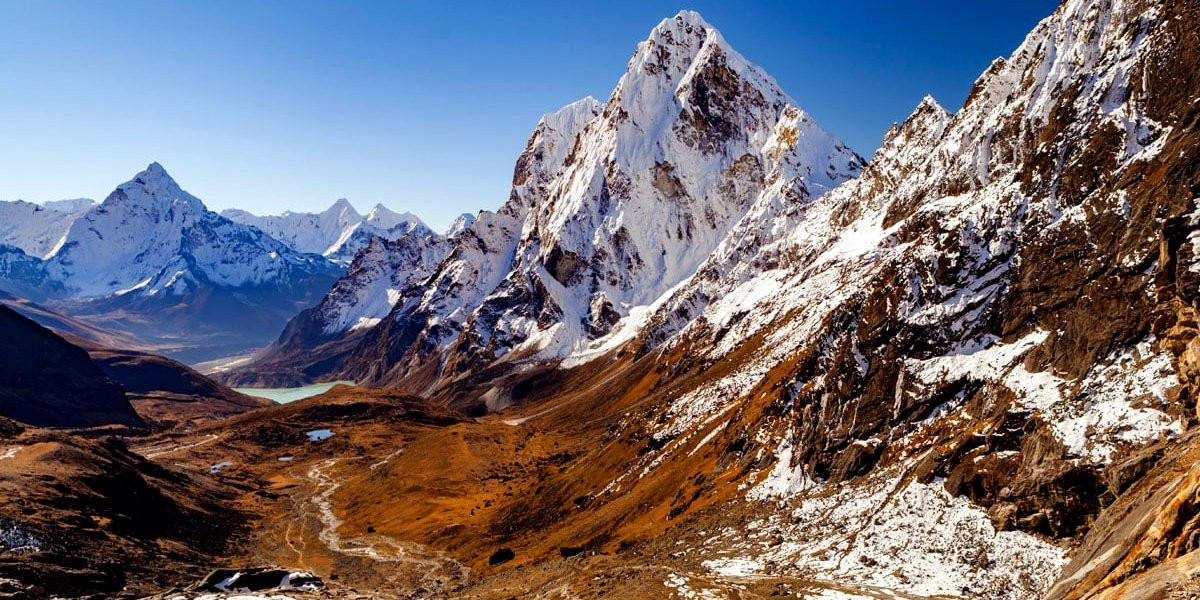
Key Highlights
-
Three High Passes: The trek includes crossing the Renjo La (5,360 meters), Cho La (5,420 meters), and Kongma La (5,535 meters) passes, each offering stunning views and formidable challenges.
-
Everest Base Camp and Kala Patthar: A visit to the Everest Base Camp (5,364 meters) provides up-close views of the Everest, while an ascent to Kala Patthar (5,555 meters) offers panoramic views of the surrounding peaks.
-
Gokyo Lakes and Gokyo Ri: The trek also features the beautiful Gokyo Lakes and an ascent of Gokyo Ri (5,357 meters), which is renowned for its spectacular views of Everest and surrounding mountains.
-
Sagarmatha National Park: This UNESCO World Heritage Site is known for its unique flora and fauna, including the possibility of spotting the elusive snow leopard and the Himalayan tahr.
Physical and Logistical Considerations
-
Duration and Distance: Typically, the trek takes about 18 to 21 days to complete, depending on acclimatization days and side trips. The route covers a substantial distance and involves rigorous daily hikes.
-
Difficulty Level: This trek is considered challenging due to the high altitudes, the technical nature of some of the passes, and the length of the trek. Proper acclimatization and physical preparation are essential to successfully complete the trek.
-
Permits Required: A TIMS card and a Sagarmatha National Park permit are necessary. These help manage trekkers' impact on the environment and contribute to the conservation efforts in the Everest region.
The cost of the Three Passes Trek itinerary varies but generally ranges from $1,500 to $2,500. This price includes guides, porters, accommodations, meals, permits, and round-trip transportation from Kathmandu to Lukla.
The Three Passes Trek is ideal for adventurers seeking a challenging and immersive experience in the Himalayas. It not only tests your endurance and trekking skills but also rewards you with some of the most breathtaking landscapes and cultural richness of the Sherpa communities in the Everest region. This trek is a journey of a lifetime, providing memories that last forever.
Tips for Best Trekking Routes and Regions in Nepal
Trekking in Nepal is an unforgettable experience, offering stunning landscapes and rich cultural encounters. However, it can be challenging, so here are essential tips to help you make the most of your trekking adventure in the best routes and regions of Nepal:
-
Choose the Right Season: The best times for trekking in Nepal are during the spring (March to May) and autumn (September to November). These seasons offer the clearest skies and the most stable weather. Monsoon season (June to August) is generally wet and can present risks of landslides in certain areas, while winters can be extremely cold at high altitudes.
-
Acclimatize Properly: High altitude sickness is a significant risk when trekking in Nepal, especially on routes that go above 3,000 meters. Ensure you include acclimatization days in your itinerary, ascend slowly, and stay hydrated to mitigate the effects of altitude.
-
Train Before You Go: Trekking in Nepal can be physically demanding, with days of walking uphill and at high altitudes. Engage in cardiovascular exercises like running, swimming, or cycling, and include hikes with a loaded backpack in your training regime to prepare your body.
-
Hire a Guide or Join a Group: Especially for remote or challenging treks like the Manaslu Circuit or Kanchenjunga Base Camp Trek, hiring a knowledgeable guide or joining a guided group can enhance your experience and provide essential support. Guides are invaluable for their local knowledge of the trails, weather conditions, and accommodations.
-
Pack Smart: Essential items for trekking include sturdy hiking boots, layers of clothing to accommodate varying temperatures, a waterproof jacket, a sleeping bag suitable for cold climates, a first aid kit, and a water purification system. Don’t forget sunscreen, lip balm, and sunglasses for high-altitude sun exposure.
-
Manage Permits and Documentation: Many trekking areas in Nepal require permits such as the TIMS card (Trekker’s Information Management System) and regional permits like those for Annapurna Conservation Area or Everest National Park. Arrange these through a trekking agency or the relevant tourism office in Kathmandu.
-
Respect Local Customs: Nepal's diverse cultures mean you'll encounter various traditions and practices. Be respectful, dress modestly, learn a few phrases in Nepali, and always ask permission before taking photographs of people.
-
Stay Informed and Flexible: Mountain weather can be unpredictable, and trekking plans might need to change at a moment's notice. Keep informed about the weather conditions, stay flexible in your planning, and listen to the advice of locals and your guide.
-
Sustainable Trekking Practices: Respect the natural environment by sticking to trails, not leaving trash behind, and using biodegradable products. Many regions are sensitive to ecological changes, so it’s crucial to minimize your impact.
-
Insurance: Make sure you have travel insurance that covers high-altitude trekking and potential emergency helicopter evacuation. Check that the altitude limit matches the highest point of your trek.
Following these tips will help ensure a safe, enjoyable, and respectful trekking experience in Nepal, allowing you to fully appreciate the natural beauty and cultural richness of this incredible country.
IdealTime for Best Trekking Routes and Regions in Nepal
Choosing the ideal time to trek in Nepal is crucial for a successful and enjoyable experience. The best times to trek in Nepal largely depend on the specific region you plan to explore, but generally, there are two peak seasons that are considered ideal due to favorable weather conditions:
Pre-Monsoon (Spring) Season: March to May
Spring is one of the most popular trekking seasons in Nepal. During this period:
-
Weather: The weather is generally stable with mild temperatures, making it comfortable for trekking. The days are warm, and the nights, while cool, are usually not freezing at higher altitudes.
-
Visibility: This season offers excellent visibility, with clear skies that provide breathtaking views of the Himalayas.
-
Nature: The landscapes are vibrant during spring, with rhododendrons and other flowers in full bloom, especially at lower altitudes, adding spectacular colors to the trails.
Post-Monsoon (Autumn) Season: September to November
Autumn is considered the best time to trek in Nepal due to several factors:
-
Weather: The monsoon rain clears up the dust and pollution, leaving clear skies. Temperatures are moderate, making for pleasant trekking conditions.
-
Visibility: Like spring, the visibility is excellent in autumn. The post-monsoon atmosphere means clearer views of the mountains.
-
Festivals: Autumn coincides with some of Nepal’s most significant festivals like Dashain and Tihar, offering trekkers a wonderful opportunity to experience Nepalese culture alongside their trek.
Other Considerations
-
Winter (December to February): Winter can be a good time for trekking in some of Nepal’s lower altitude regions like Ghorepani-Poon Hill, where the trails are less crowded, and the views are still clear. However, at higher altitudes, many lodges close, and temperatures can drop significantly below freezing, making it less ideal for higher treks.
-
Monsoon (June to August): Trekking during the monsoon is generally not recommended due to heavy rains, which can lead to slippery trails, leeches, and obscured mountain views. However, regions like Upper Mustang and Dolpo fall in the rain shadow area and are suitable for trekking even during the monsoon.
By timing your trek appropriately, you can enhance your experience, enjoying not only the physical trek but also the natural beauty and cultural richness of Nepal. Each season offers a unique perspective of the Himalayas, so choose based on your preferences for climate, scenery, and cultural experiences.
From the famous trails to Everest Base Camp to the little-known tracks of the Manaslu Circuit, Nepal provides a wide selection of trekking opportunities. Every path offers a different mixture of stunning vistas, wealthy cultural engagements, and bodily demands. Perfect trekking times—spring and fall—guarantee excellent weather and unobstructed views that add to your adventure. More than a physical pursuit, trekking in Nepal is a deep exploration of culture and nature destined to bring every adventurer lifelong memories and life-changing experiences.
FAQs for Best Trekking Routes and Regions in Nepal
Q: What is the best time of year to trek in Nepal?
A: The best times to trek in Nepal are during the spring (March to May) and autumn (September to November). These seasons provide the most stable weather and clear skies, ideal for mountain views.
Q: Do I need a guide to trek in Nepal?
A: While not all treks require a guide, having one is highly recommended, especially for remote and challenging treks like the Manaslu Circuit or Upper Mustang due to their complexity and regulations. Guides can also enhance your understanding of the local culture and environment.
Q: What permits do I need for trekking in Nepal?
A: Most treks in Nepal require a TIMS (Trekkers' Information Management System) card and a regional conservation area or national park permit. Restricted areas like Upper Mustang or Manaslu require additional special permits, which must be arranged through a registered trekking agency.
Q: How should I prepare for high-altitude trekking?
A: Acclimatize properly by incorporating rest days into your itinerary, stay hydrated, eat a high-calorie diet, and ascend slowly. It's also wise to learn about the symptoms of altitude sickness.
Q: What are the essential items to pack for a trek in Nepal?
A: Essential items include sturdy trekking boots, layers of thermal clothing, a waterproof jacket, a sleeping bag suitable for cold temperatures, a first aid kit, a water purification system, and sun protection. For remote treks, additional supplies like a tent and cooking gear may be necessary.
Q: Can I trek in Nepal if I have never trekked before?
A: Yes, there are treks suitable for beginners, such as the Poon Hill trek or the Langtang Valley trek. These routes offer moderate challenges and are a good way to experience Himalayan trekking without the demands of the higher-altitude treks.
Q: What are the major risks associated with trekking in Nepal?
A: The major risks include altitude sickness, sudden weather changes, and physical injuries. Adequate preparation, staying informed about weather conditions, and trekking within your physical limits can mitigate these risks.
Q: How much does it cost to trek in Nepal?
A: Costs vary widely depending on the length of the trek, the region, whether you hire a guide and porter, and your mode of transportation within Nepal. Basic treks can cost as little as $20-$30 per day, while more remote or challenging treks requiring special permits and guides can cost significantly more.
Q: Are there any cultural considerations to keep in mind while trekking in Nepal?
A: Yes, it’s important to respect local customs and traditions. Dress modestly, always ask permission before taking photographs of people, and be mindful of local etiquette, especially in religious sites.
Q: What is the situation with food and lodging on the trekking routes?
A: Most popular trekking routes have tea houses that provide lodging and meals. The accommodation is basic but usually comfortable, and meals typically include a variety of local and western dishes suitable for high-energy trekking.
For the Nepal tour, please click here.
If you are looking for different kinds of Nepal Tours or Trekking Packages, feel free to contact us.
